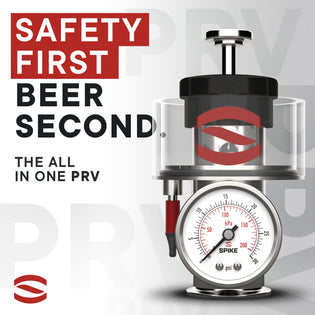
Water chemistry is a fairly important component to your brewing, whether you realize it or not. Water is, after all, the largest component in your beer! Unfortunately, water chemistry can be intimidating and is not at the forefront of the novice homebrewer’s mind. As homebrewers, we typically stick to the basics – and for the most part that’s generally good enough to make a great beer.
If you’re willing to take a step towards refining your beer, water chemistry can be a next step that can make a big difference.
Simply put, if it’s water you wouldn’t want to drink, it’s probably not great for your beer. If it tastes like a garden hose, it’s going to throw garden hose flavor into the beer. If there’s an algal or sulfurous note to it, you should think about not using this water source. Does the water taste metallic? Maybe it’s a good idea to grab some distilled water from the store to use instead. Does the water taste free of any flavors, and look clean and clear? Probably just fine for your brew!
How to check your water composition:
- Request a water report from your municipal water source (monthly or yearly average)
- Spend some money to get your water analyzed by a lab
- Purchase a specific test kit (aquarium test kits are typically cheap, fast and reliable)
- In some cities, including Denver, Colorado, Denver Water provides information for their customers and averages in their yearly assessment reports.
Water chemistry components
That being said, if you’re willing to take a step towards refining your beer, water chemistry can be a next step that can make a big difference.
Water chemistry can be broken down into two major components:
- Alkalinity (carbonate/bicarbonate measured against pH)
- Hardness (calcium/magnesium content)
These two factors can significantly alter the perceived flavor and texture of your beer. If you haven’t been testing your water, or don’t know where to start, it’s safest to purchase purified (reverse osmosis, deionized) water from your grocery store and then simply calculate (Beersmith and Brewer’s Friend have excellent calculators!) the amount to add hardness or alkalinity. There are multiple ways of adjusting for each parameter, so be sure to experiment with each and compare.
Experimenting with water types
Starting with your own tap water, compared to the purified water from the grocery store, is a good place to start. From there, adjusting each parameter slightly and comparing against a reference sample (keep extra bottles of each test!) refines your water to provide you with the best beer for each style you want to brew! Generally, the more carbonate, the more buffering capacity (ability to resist pH change) and increased efficiency (ability to convert and extract sugars) you have in your mash – particularly with dark malts that exhibit higher acidity – and so naturally high amounts of carbonates won’t need as much alkaline addition. There’s a limit to this, however, so shoot for an appropriate mash pH (low to mid-5’s) to make sure you’re not overdoing it either way. Additions of calcium sulfate or chloride will help introduce calcium, but don’t go overboard: aim for around 150ppm to start, and about 50ppm minimum.
Tip: Use of more sulfate or chloride will depend on whether you are shooting for a very hoppy beer (use sulfate) or a sweeter malt beer (chloride).
Happy Brewing!
Ethan Tsai
Quality Control Specialist at Tivoli Brewing Company
Beer Industry Program Instructor at MSU Denver Beer Industry Program











